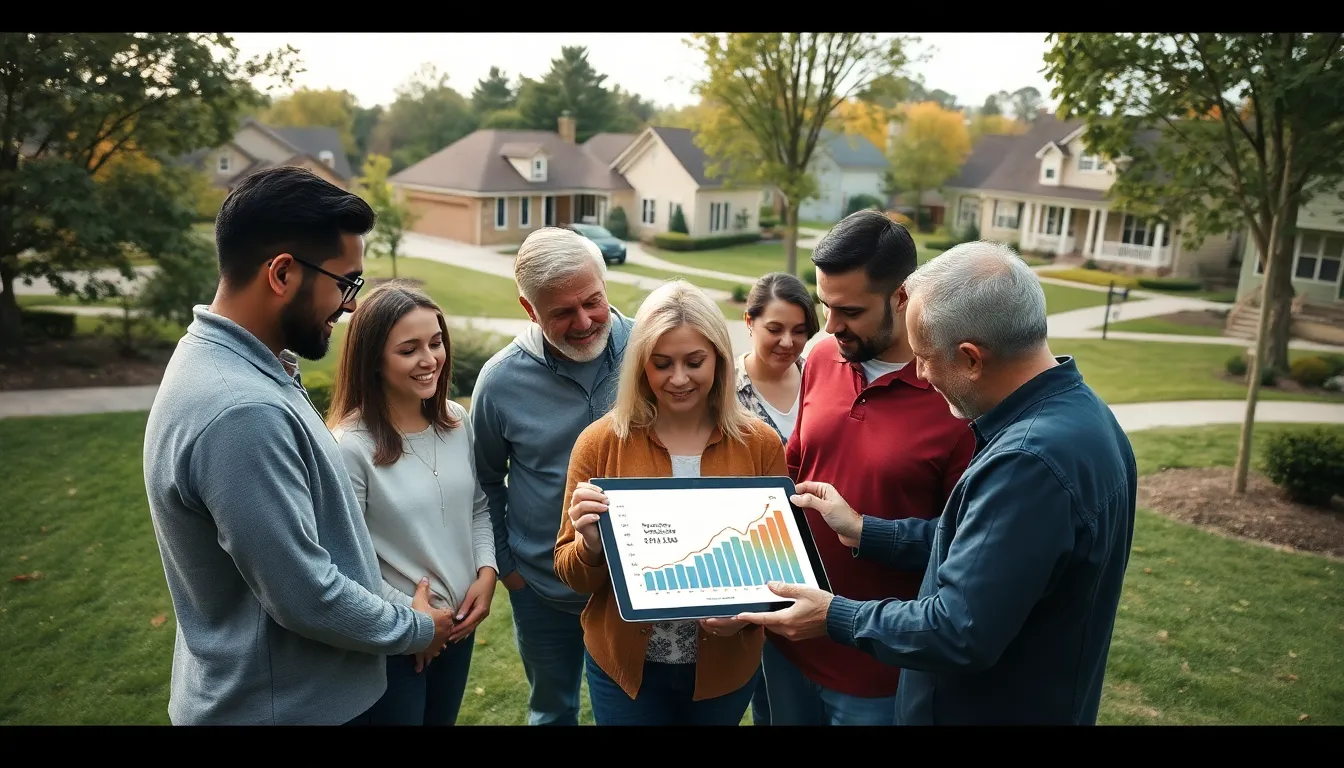Home equity growth has become a hot topic among homeowners and investors alike. As property values rise, many are discovering the financial power locked within their homes. Understanding how this growth works can open doors to new opportunities, whether it’s funding renovations, consolidating debt, or investing in a new property.
In today’s real estate market, leveraging home equity can be a smart strategy. With rising home prices and low-interest rates, homeowners are in a prime position to tap into their equity. This article explores the factors driving home equity growth, the benefits it offers, and how to make the most of this valuable asset.
Table of Contents
ToggleUnderstanding Home Equity Growth
Home equity growth refers to the increase in the portion of a home that an owner truly owns. This growth occurs when property values rise or when homeowners pay down their mortgage balances, presenting numerous financial opportunities.
Definition of Home Equity
Home equity is the difference between a property’s current market value and the outstanding mortgage balance. For example, if a home is worth $300,000 and the mortgage balance is $200,000, the home equity amounts to $100,000. Home equity serves as a tangible asset that homeowners can leverage for various financial needs.
Importance of Home Equity Growth
Home equity growth plays a crucial role in wealth-building strategies for homeowners. Increased home equity can provide access to cash for significant expenses like renovations or education. It can facilitate debt consolidation, reducing interest payments on high-rate loans. Additionally, higher equity levels can enhance borrowing options, allowing for favorable loan terms or enabling real estate investments. Understanding home equity growth empowers owners to make informed financial decisions and take advantage of a rapidly changing housing market.
Factors Influencing Home Equity Growth

Home equity growth depends on various factors that affect property values and mortgage balances. Understanding these influences helps homeowners maximize their investments.
Market Conditions
Market conditions play a significant role in home equity growth. Rising demand for housing, limited inventory, and favorable economic indicators contribute to increased property values. Nationally, home prices rose by an average of 15% annually in 2021 and 2022 (source: CoreLogic). Low-interest rates encourage buyers to enter the market, driving up prices further. Homeowners can benefit from these conditions by monitoring local trends and selling at opportune moments.
Property Value Appreciation
Property value appreciation directly impacts home equity. As the real estate market strengthens, home values tend to rise. Factors like improved infrastructure, desirable neighborhoods, and local amenities influence appreciation rates. For example, homes in areas with new schools or parks may see faster appreciation than those in less attractive locations. Homeowners can track local market data to understand their home’s value and make informed decisions regarding renovations or sales.
Mortgage Paydown
Mortgage paydown also contributes to home equity growth. Each payment reduces the outstanding mortgage balance, increasing the homeowner’s stake in the property. Homeowners who make additional payments or refinance to lower rates can accelerate this process. For instance, making an extra principal payment each year can reduce a 30-year mortgage by multiple years (source: Bankrate). This strategy not only grows equity but also reduces interest paid over the loan’s life, enhancing overall financial health.
Strategies to Enhance Home Equity Growth
Homeowners can implement various strategies to boost home equity growth. These methods focus on increasing property value and managing mortgage balances effectively.
Home Improvements
Home improvements enhance property value, leading to increased home equity. Key projects include:
- Kitchen Remodels: Updated kitchens often yield high returns, with average ROI around 80% to 90%.
- Bathroom Upgrades: Enhancing bathrooms adds significant value, averaging ROI of 70% to 80%.
- Exterior Enhancements: Investing in landscaping or exterior siding can improve curb appeal and increase overall value.
- Energy Efficiency Upgrades: Installing energy-efficient windows or HVAC systems may attract buyers and add to property value.
- Additional Living Space: Adding a room or finishing a basement expands usable space, generally increasing equity.
Refinancing Options
Refinancing options can optimize mortgage financing, helping increase home equity. Important strategies include:
- Rate-and-Term Refinance: Securing a lower interest rate accelerates mortgage payoff, resulting in increased equity over time.
- Cash-Out Refinance: Homeowners convert equity to cash for renovations or investments while keeping the same property.
- Home Equity Line of Credit (HELOC): A HELOC provides access to equity for immediate cash needs, allowing homeowners to leverage equity strategically.
- Pay Extra on Principal: Extra payments toward principal reduce overall debt faster, leading to quicker equity growth.
Implementing these strategies can significantly enhance home equity, creating opportunities for financial flexibility and wealth-building.
Risks and Considerations
Understanding the risks and considerations associated with home equity growth is vital for homeowners and investors. Market fluctuations and financial management should be closely monitored to make informed decisions.
Market Fluctuations
Market fluctuations can significantly impact home equity growth. Property values can rise and fall due to economic conditions, interest rates, or regional trends. Data from the National Association of Realtors shows that housing markets can experience up to 10% variations in home prices within a single year. Homeowners must remain vigilant during downturns, as declining property values can diminish equity and lead to negative equity situations where the mortgage balance exceeds the home’s value. Understanding local market dynamics, including supply and demand, is essential for predicting such fluctuations.
Financial Management
Effective financial management is crucial when leveraging home equity. Homeowners must evaluate their debts, income, and expenses before accessing equity. A cash-out refinance, for instance, may provide funds for home improvements or debt consolidation, yet it can also elevate monthly payments and extend the loan term. Homeowners should carefully calculate the long-term implications of such decisions. According to the Consumer Financial Protection Bureau, excessive borrowing against home equity can lead to financial strain, so prudent budgeting and thorough planning are necessary. Prioritizing a sustainable approach to debt management can help homeowners maximize the benefits of home equity growth while minimizing risks.
Home equity growth represents a vital opportunity for homeowners seeking financial flexibility and wealth-building potential. By understanding how to leverage this asset, individuals can fund renovations, consolidate debts, or invest in additional properties.
As the real estate market continues to thrive, staying informed about local trends and property values is essential. With the right strategies in place, homeowners can maximize their equity growth while navigating potential risks.
Ultimately, a proactive approach to home equity can lead to significant financial benefits and empower homeowners to make sound investment decisions.





